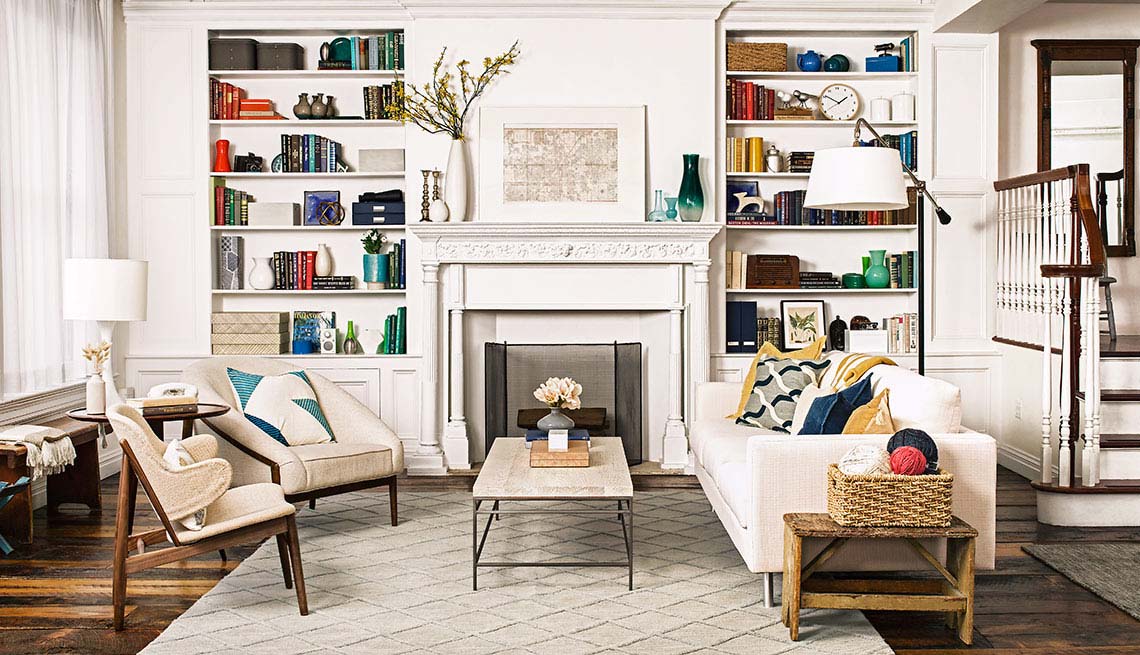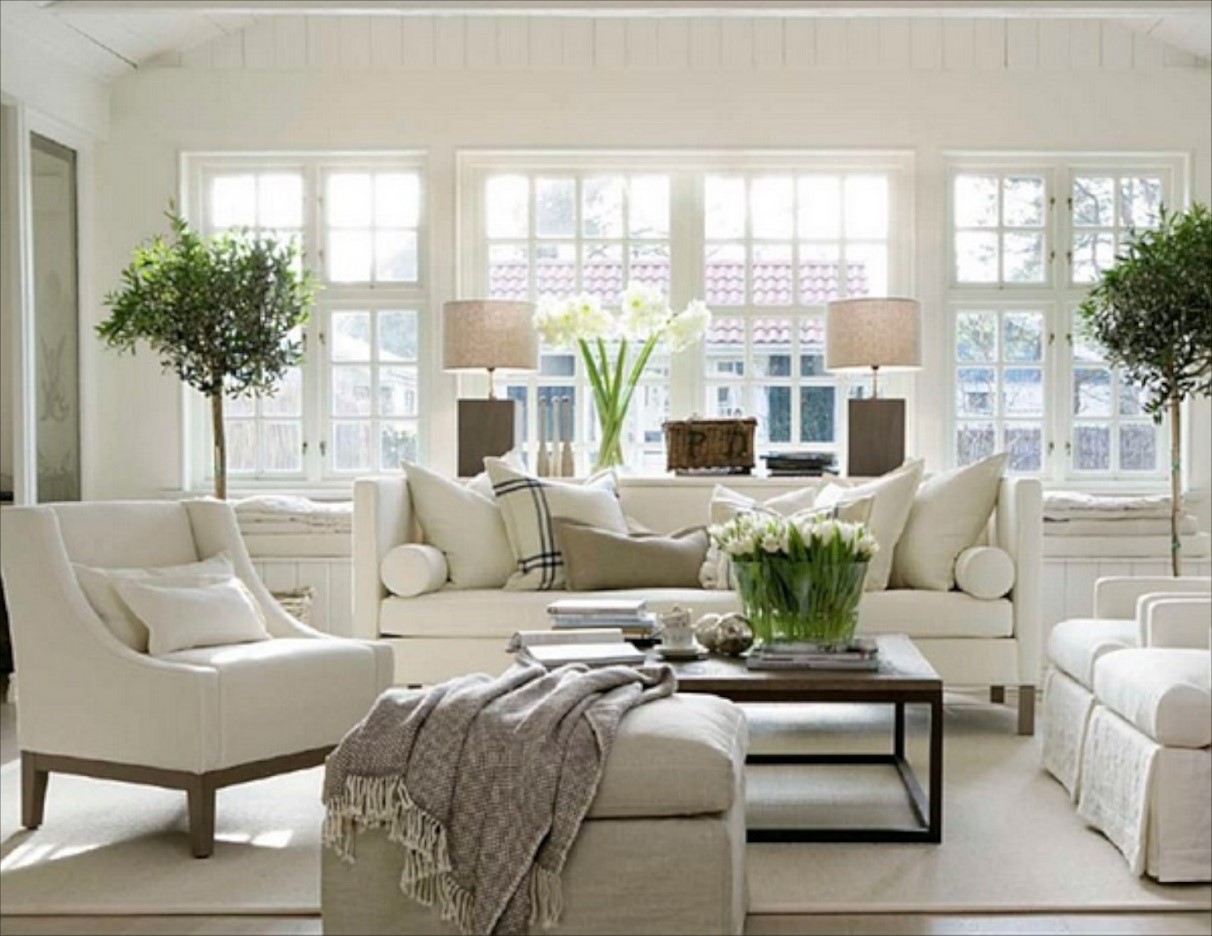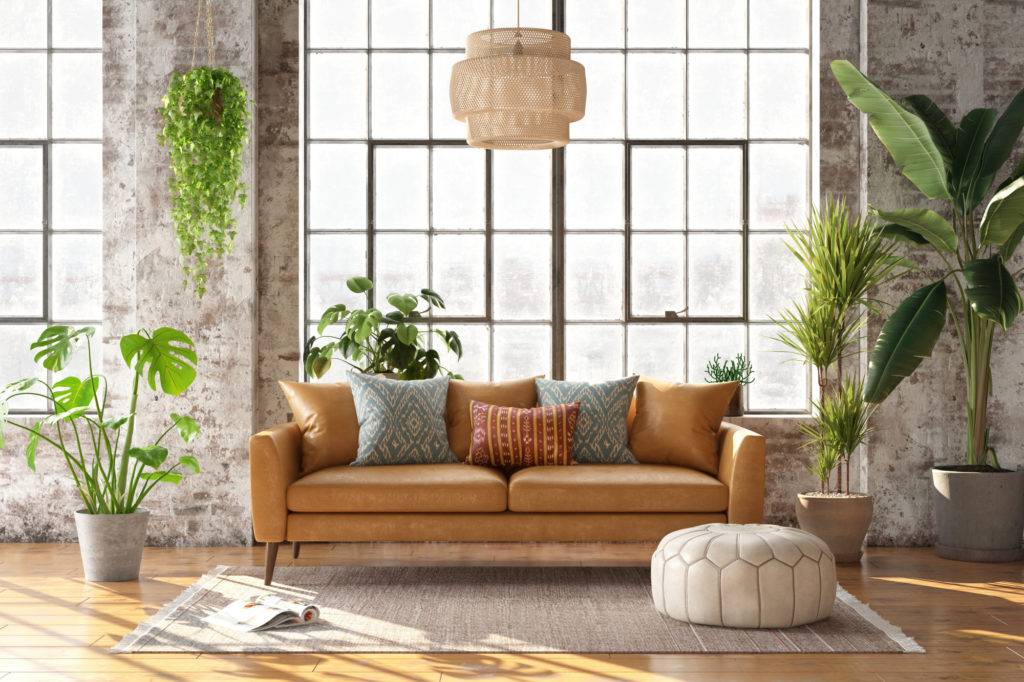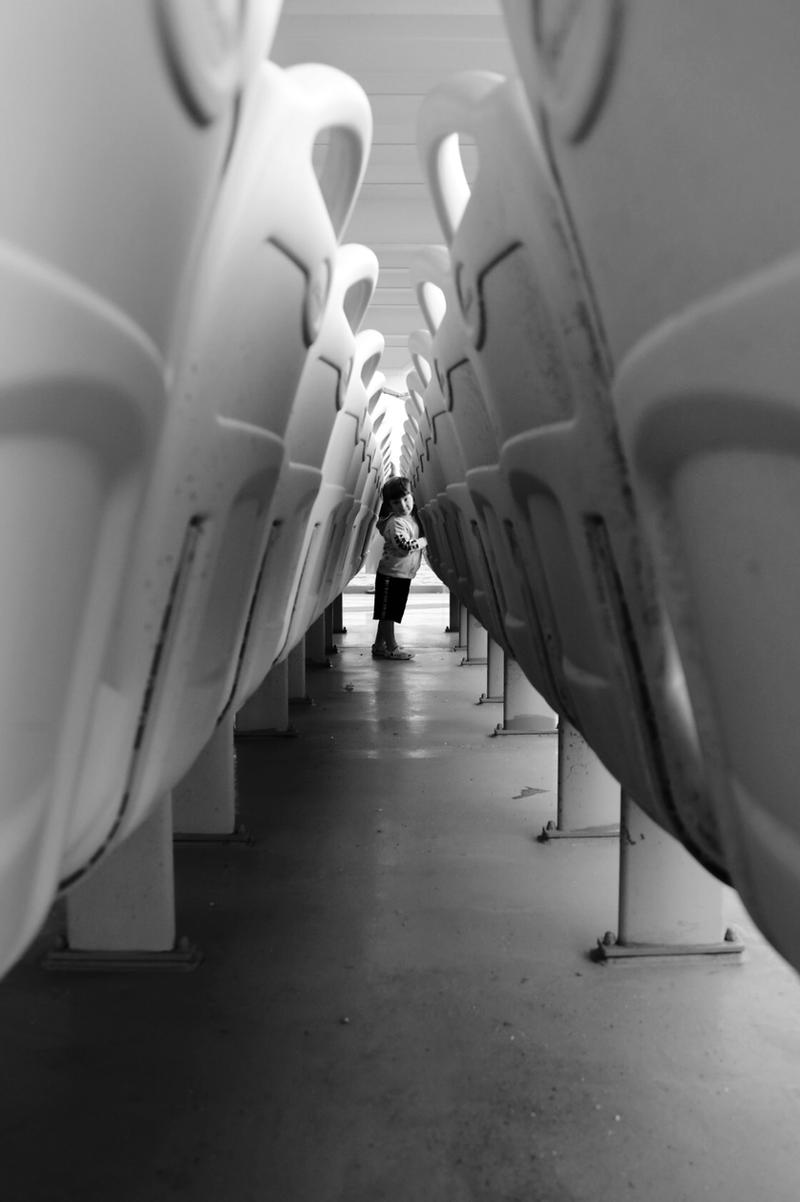One of the key stages to achieving a minimalist living room is decluttering. This means getting rid of any unnecessary items that are taking up space and creating a sense of clutter. This can include old magazines, unused decorations, or excess furniture. The first step is to go through each item in your living room and ask yourself if it truly brings value to the space. If not, it's time to let it go. Remember, less is more in a minimalist living room.Declutter
Once you have decluttered your living room, it's important to organize the remaining items in a functional and visually appealing way. This means finding a designated spot for each item and keeping things neat and tidy. Utilize storage solutions such as baskets, shelves, and bins to keep things organized and out of sight. This will not only make your space look more minimalist, but it will also make it easier to maintain in the long run.Organize
A common mistake in creating a minimalist living room is having too much furniture. This can make the space feel crowded and overwhelming. It's important to only keep the essential pieces of furniture that are necessary for daily use. Consider removing any extra chairs, side tables, or ottomans that are not adding value to the space. This will create a more open and airy feel in your living room.Remove excess furniture
Colors play an important role in achieving a minimalist living room. Stick to a neutral color palette, such as whites, grays, and earth tones. These colors create a sense of calm and simplicity in a space. Avoid bold or busy patterns and instead opt for solid colors. This will create a cohesive and minimalist look in your living room.Choose a neutral color palette
To make the most out of your living room space, invest in multi-functional furniture. This means pieces that serve more than one purpose, such as a coffee table with hidden storage or a sofa that can also be used as a guest bed. This will help you maximize the functionality of your living room while keeping the space clutter-free.Invest in multi-functional furniture
Another important aspect of a minimalist living room is natural light. This means opening up your curtains and blinds to let in as much natural light as possible. This will not only make your space feel brighter and more inviting, but it will also save on energy costs. If you have limited natural light in your living room, consider adding a few mirrors to reflect light and make the space appear larger.Maximize natural light
Plants are a great way to add life and texture to a minimalist living room. Choose low-maintenance plants, such as succulents or air plants, to add a touch of greenery without creating clutter. Plants also have the added benefit of purifying the air and creating a sense of calm in a space.Incorporate plants
In a minimalist living room, storage solutions are key to keeping things organized and out of sight. Utilize hidden storage, such as under the bed or inside ottomans, to store items that are not in use. This will help maintain a clutter-free space and make it easier to keep things organized.Use storage solutions
When it comes to decorating a minimalist living room, less is more. Instead of filling your space with numerous decorations, choose a few statement pieces that will make an impact. This could be a large piece of artwork, a unique sculpture, or a simple vase with fresh flowers. Remember to keep it simple and avoid cluttering surfaces with too many decorations.Simplify decor
Negative space, also known as empty space, is an important aspect of minimalist design. Instead of filling every corner of your living room with furniture or decorations, embrace the negative space to create a sense of balance and simplicity. This will also make your living room feel more spacious and open.Embrace negative space
Creating a Functional and Minimalist Living Room

Incorporating Key Elements
 When it comes to designing a minimalist living room, it's important to focus on the key elements that will make the space functional and visually appealing. These elements include furniture, lighting, and decor.
Furniture:
The first step in creating a minimalist living room is to declutter and only keep essential pieces of furniture. Choose pieces that have clean lines and a simple design. Avoid bulky or ornate furniture, as it can make the room feel cluttered and overwhelming. Opt for multi-functional furniture, such as a coffee table with hidden storage or a sofa bed, to maximize space and reduce clutter.
Lighting:
Proper lighting is crucial in a minimalist living room. Natural light is the best option, so try to maximize the amount of natural light coming into the room. If your living room doesn't have many windows, consider installing sheer curtains or using light-colored paint to reflect light. In terms of artificial lighting, opt for simple and modern light fixtures that provide ample light without being too overpowering.
Decor:
When it comes to decor, less is more in a minimalist living room. Choose a few statement pieces, such as a piece of artwork or a unique vase, and keep the rest of the decor simple. Avoid cluttering shelves and surfaces with knick-knacks and instead opt for a few strategically placed items that add visual interest to the room.
When it comes to designing a minimalist living room, it's important to focus on the key elements that will make the space functional and visually appealing. These elements include furniture, lighting, and decor.
Furniture:
The first step in creating a minimalist living room is to declutter and only keep essential pieces of furniture. Choose pieces that have clean lines and a simple design. Avoid bulky or ornate furniture, as it can make the room feel cluttered and overwhelming. Opt for multi-functional furniture, such as a coffee table with hidden storage or a sofa bed, to maximize space and reduce clutter.
Lighting:
Proper lighting is crucial in a minimalist living room. Natural light is the best option, so try to maximize the amount of natural light coming into the room. If your living room doesn't have many windows, consider installing sheer curtains or using light-colored paint to reflect light. In terms of artificial lighting, opt for simple and modern light fixtures that provide ample light without being too overpowering.
Decor:
When it comes to decor, less is more in a minimalist living room. Choose a few statement pieces, such as a piece of artwork or a unique vase, and keep the rest of the decor simple. Avoid cluttering shelves and surfaces with knick-knacks and instead opt for a few strategically placed items that add visual interest to the room.
Utilizing Storage Solutions
 One of the biggest challenges of a minimalist living room is finding storage solutions for all your belongings. However, there are many clever ways to incorporate storage into a minimalist design without sacrificing style.
Hidden Storage:
Utilize furniture with hidden storage, such as ottomans or benches with storage compartments, to keep items out of sight. You can also use floating shelves to display items while also providing storage space.
Multi-functional Furniture:
As mentioned before, choosing multi-functional furniture can help save space and reduce clutter. Consider a TV stand with built-in storage or a bookshelf that doubles as a room divider.
Minimalist Storage Pieces:
When it comes to storage pieces, opt for ones with a minimalist design. This will ensure they blend seamlessly into the overall design of the room. Look for storage boxes or baskets in neutral colors and simple designs.
By incorporating these key elements and utilizing clever storage solutions, you can create a functional and minimalist living room that is both stylish and clutter-free. Remember to keep the design simple and focus on quality pieces rather than quantity. With the right approach, you can achieve a minimalist living room that is both functional and visually appealing.
One of the biggest challenges of a minimalist living room is finding storage solutions for all your belongings. However, there are many clever ways to incorporate storage into a minimalist design without sacrificing style.
Hidden Storage:
Utilize furniture with hidden storage, such as ottomans or benches with storage compartments, to keep items out of sight. You can also use floating shelves to display items while also providing storage space.
Multi-functional Furniture:
As mentioned before, choosing multi-functional furniture can help save space and reduce clutter. Consider a TV stand with built-in storage or a bookshelf that doubles as a room divider.
Minimalist Storage Pieces:
When it comes to storage pieces, opt for ones with a minimalist design. This will ensure they blend seamlessly into the overall design of the room. Look for storage boxes or baskets in neutral colors and simple designs.
By incorporating these key elements and utilizing clever storage solutions, you can create a functional and minimalist living room that is both stylish and clutter-free. Remember to keep the design simple and focus on quality pieces rather than quantity. With the right approach, you can achieve a minimalist living room that is both functional and visually appealing.




:max_bytes(150000):strip_icc()/decluttering-your-entire-home-2648002_final-8c0e3c4755b241a5abff3315c2a44c22.png)













:max_bytes(150000):strip_icc()/easy-tips-to-organize-your-dresser-2648392-07-0bf5c37bd11a4dccb672791443a75d61.jpg)

.jpg)























:max_bytes(150000):strip_icc()/MyDomaine_ColorPalette-Neutral-1-fe9a91dcf8814904a630a0d928216bcd.jpg)










































































